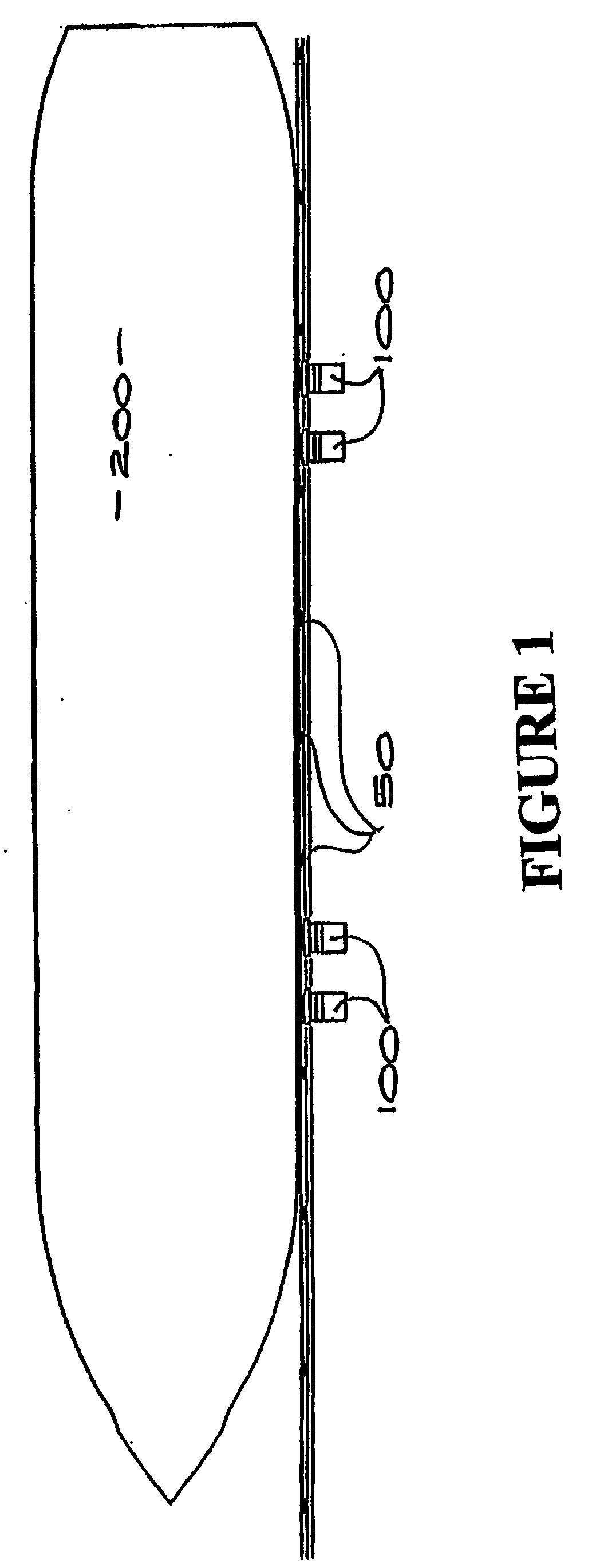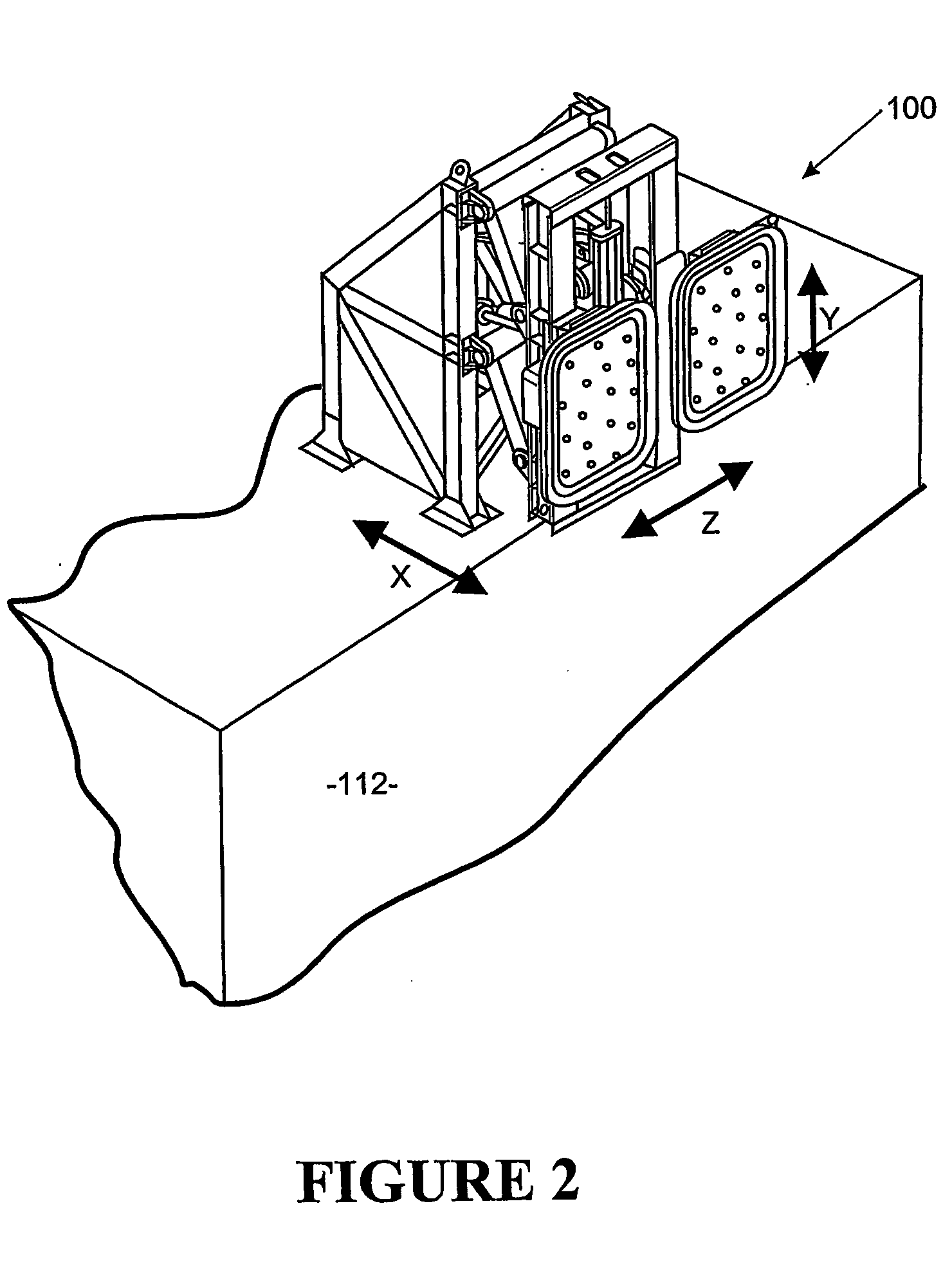Mooring system with active control
a mooring system and active control technology, applied in the field of mooring systems with active control, can solve the problems of inability to mooring a vacuum cup-style mooring robot, and inability to provide mooring load data, etc., to achieve the effect of reducing energy consumption, improving safety, and maximizing the performance of the mooring robo
- Summary
- Abstract
- Description
- Claims
- Application Information
AI Technical Summary
Benefits of technology
Problems solved by technology
Method used
Image
Examples
Embodiment Construction
[0184] Referring to FIGS. 1, 2 and 3 of the drawings, the present invention comprises a mooring system incorporating at least one and in a more preferred form, a plurality of mooring robots 100, which may be of a kind described in our PCT International Application No. PCT / NZ02 / 00062. The description of the mooring robots in PCT / NZ02 / 00062 is hereby incorporated by reference. Other preferred embodiments of a mooring robot for the system of the present invention may also be utilised and reference will hereinafter be made to an alternative form with reference to FIGS. 19 to 21. The mooring system may alternatively include mooring robots 100 fixed to the vessel allowing the vessel to be readily fastened to a bearing plate fixed to the dock 110 or to another vessel. Whilst reference in the most preferred form of the invention is made to a configuration where a mooring robots is fixed on a wharf, it will be appreciated that such mooring robots may alternatively be engaged to fixed pylons ...
PUM
 Login to View More
Login to View More Abstract
Description
Claims
Application Information
 Login to View More
Login to View More - R&D
- Intellectual Property
- Life Sciences
- Materials
- Tech Scout
- Unparalleled Data Quality
- Higher Quality Content
- 60% Fewer Hallucinations
Browse by: Latest US Patents, China's latest patents, Technical Efficacy Thesaurus, Application Domain, Technology Topic, Popular Technical Reports.
© 2025 PatSnap. All rights reserved.Legal|Privacy policy|Modern Slavery Act Transparency Statement|Sitemap|About US| Contact US: help@patsnap.com



